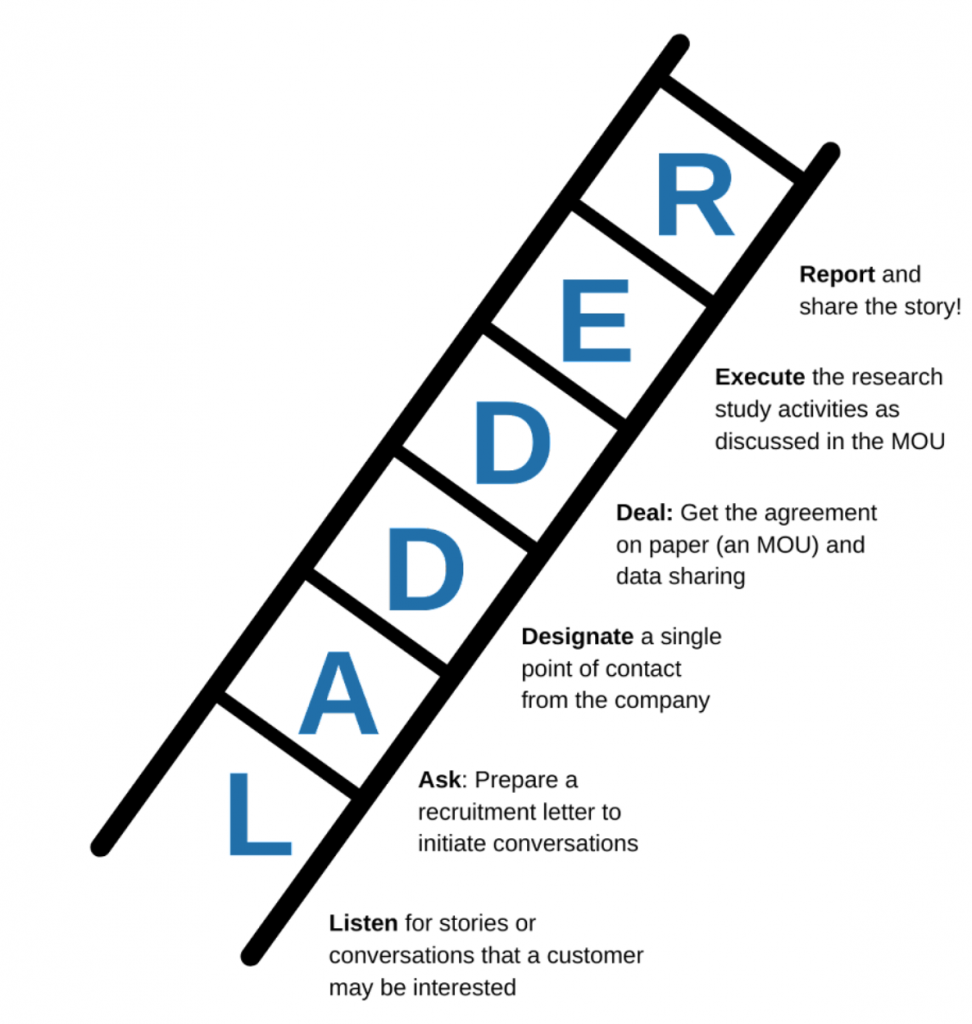Whether you’re a global educational company with a large product portfolio or a small educational business with a targeted geographic/grade band, the process of recruiting a research partner is fundamentally important to the success of your study. This article provides a brief overview to leverage the relationships you have with your customers to turn them into research partners for a successful study.
Step 1: Design
The first thing to decide on is the design of your research study. What ESSA evidence level are you aiming for? The level goal will let you know which of your customers to approach for recruitment.

To learn more about the ESSA levels of evidence, check out this booklet.
Step 2: Research Activities
Now that you have decided on the evidence-level goal of your study, the next question to ask is: What will you be asking of your research partners? We recommend including student data sharing, surveys, and interviews. But, depending on your study design, it could also have observations, intervention logs, and focus groups. Something to note is if you’re trying for ESSA Level 4, a case study could just include data sharing and administrative interviews.
Step 3: Criteria for Research Partners
As you begin identifying potential partners, some criteria to consider are:
- Engagement: Student success with your products!
- Size:
- Over 175 students per condition are required to get a “Strong” or “Moderate” label (350 total students). Evidence for ESSA allows you to combine studies.
- More students are better (30+ students per condition per grade is the absolute minimum).
- Assessments
- The type of assessment used needs to be common or well-known (must be a third-party tool to avoid bias)
- District ability to share student-level data is necessary (student ID numbers can be de-identified through research analysis)
- Intervention Length
- Need to be utilizing the program for at least 12 weeks
Once you decide which of your customers fit with your study design and criteria and what your research activities will be, it’s time to climb the LADDER!
Step 4: Decide on Incentives
It is important to think of what type of incentive you can offer the districts/teachers as the study will take varying effort on their part. There are many different options for benefits: free training opportunities, free products or licenses, discounts on future purchases, gift cards for interviewees or focus group attendees, gift card raffle for a sample of survey participants, etc. Decide what works best for your company and your research partners.
Step 5: Climb the Process LADDER
Use the LADDER to help with the process of recruitment.

More specifically, when talking with your customers, listen for thoughts about being open to becoming a research partner. When asking your customer to be a research partner, you want to do three things; 1) Include the ESSA Level evidence and design details in this first contact, 2) Include any benefits that the district will receive for participating, and 3) Ask for a meeting to discuss the opportunity. To ensure clear communication, designate one point of contact within your company (or research organization) to handle emailing and the arrangement of meetings. When the customer agrees to be a research partner and a deal is made, make sure to get an agreement on paper (an MOU – Memorandum of Understanding) and data-sharing agreements to ensure all parties understand what is going to happen. Then, execute the stay like you said you would. Finally, create a report and share the data story you found!
Other Considerations
As your body of research increases and your company grows, it is important to consider your research portfolio as a whole. For example, if you have studies on the west coast, try to recruit research partners on the east coast. If you already have a district that has a large percentage of Hispanic students, consider a district with mostly non-Hispanic students. Here are characteristics to consider:
- Product type (intervention products need more schools because there will be fewer students using the product in each school
- Product fidelity of use
- Size of the schools and sites
- Geographic location
- Demographic profiles
- Teacher training or knowledge in the domain (i.e., the science of reading) or product itself
You’re all set!
Thank you for your support in recruiting sites for the research studies! The right school partner can make all the difference in meeting your goals. Please reach out with any questions or if you would like additional support: info@lxdresearch.com. For more information and worksheets to help with your recruiting process, check out our Educational Research Recruitment Guide

